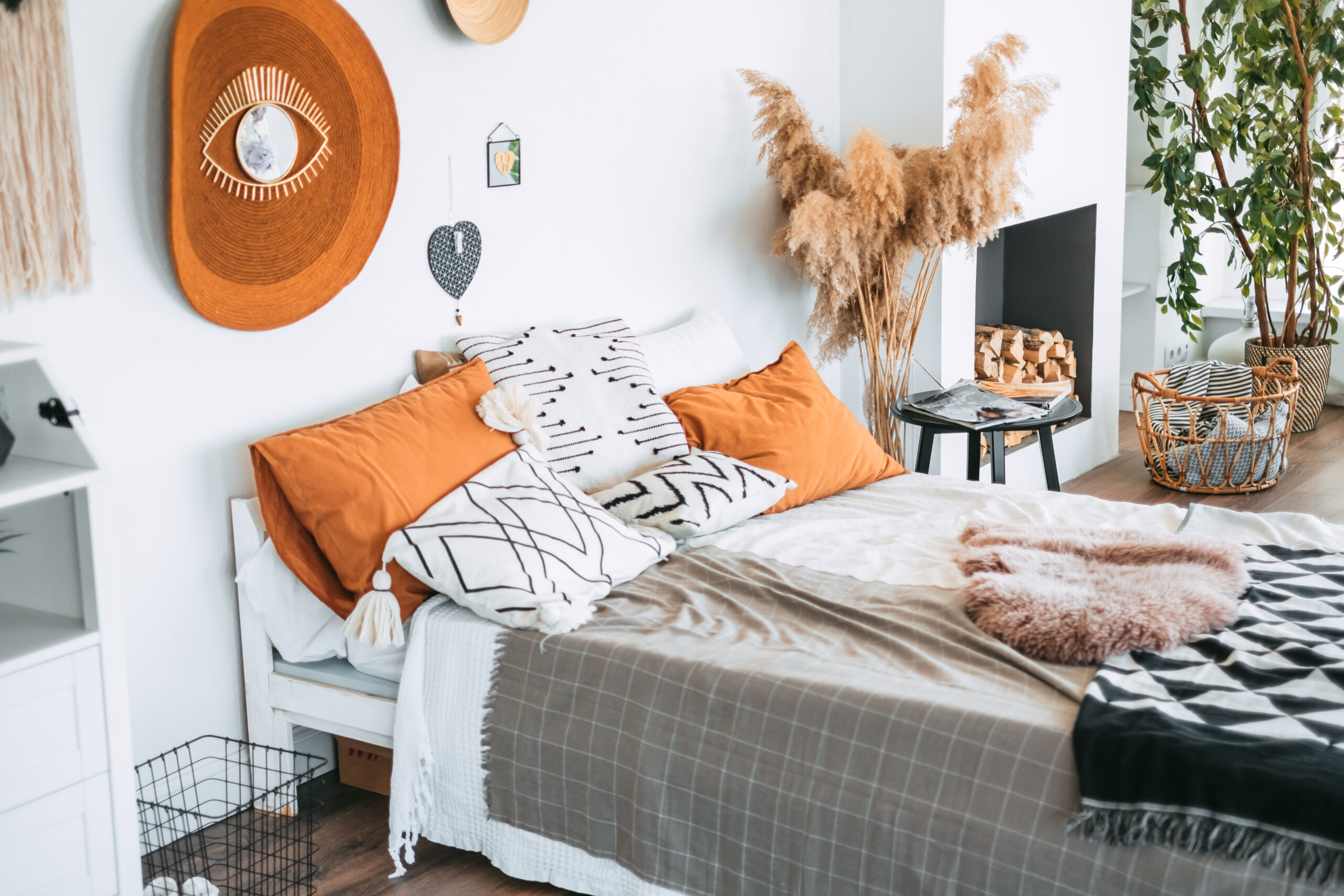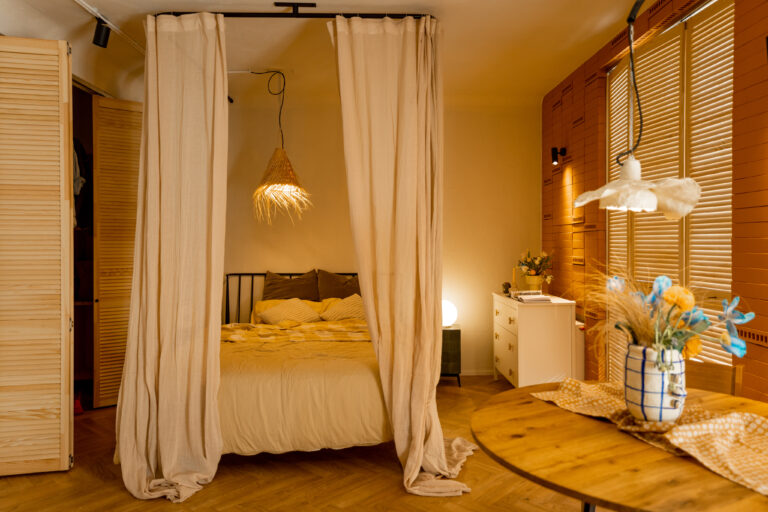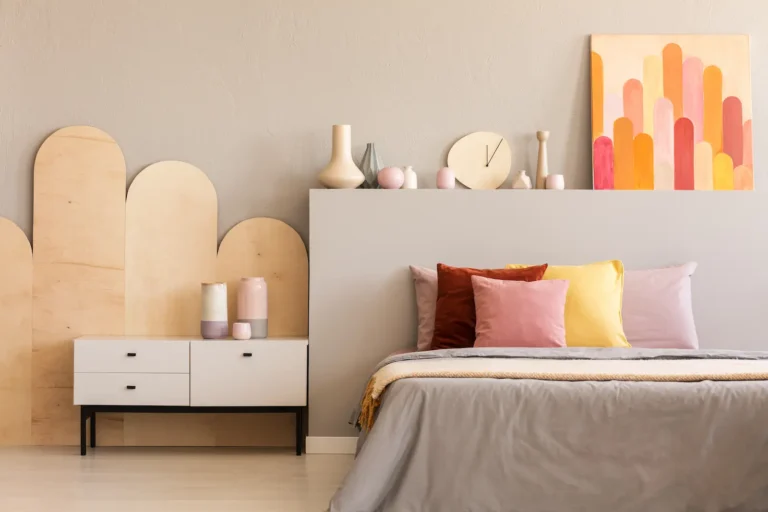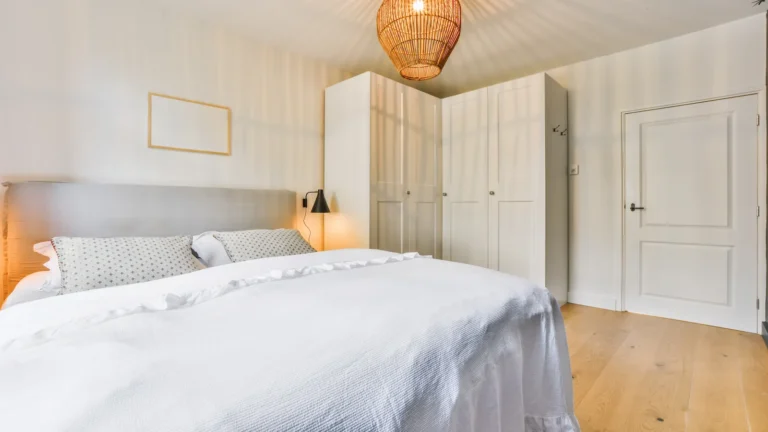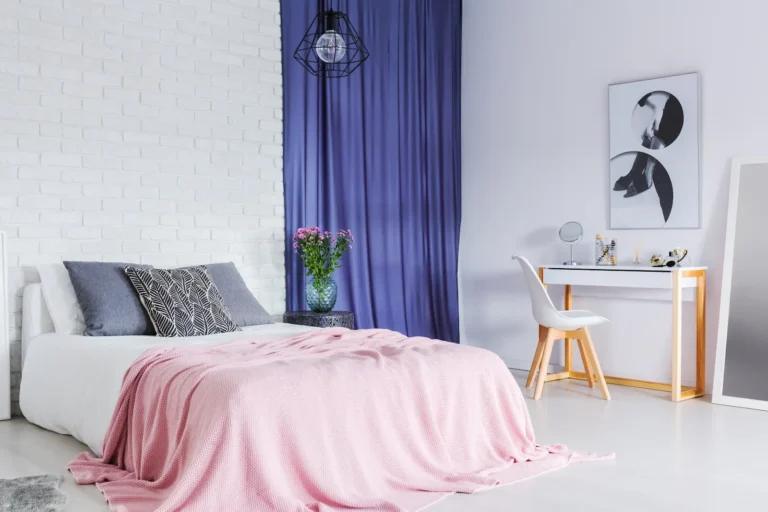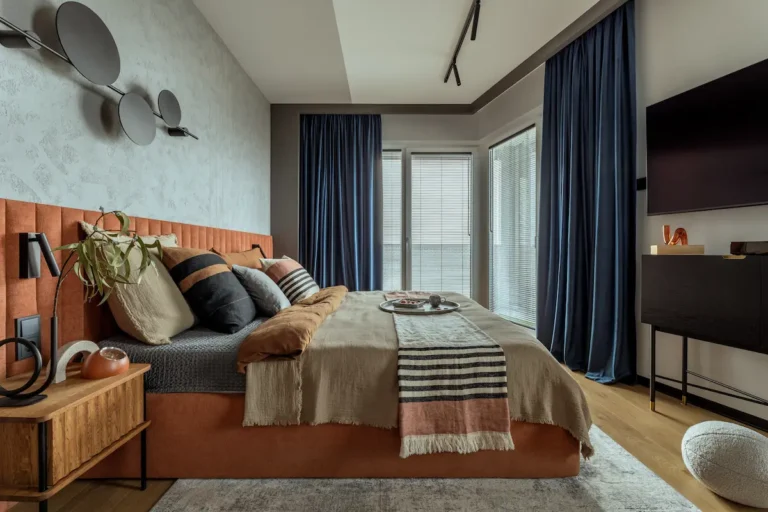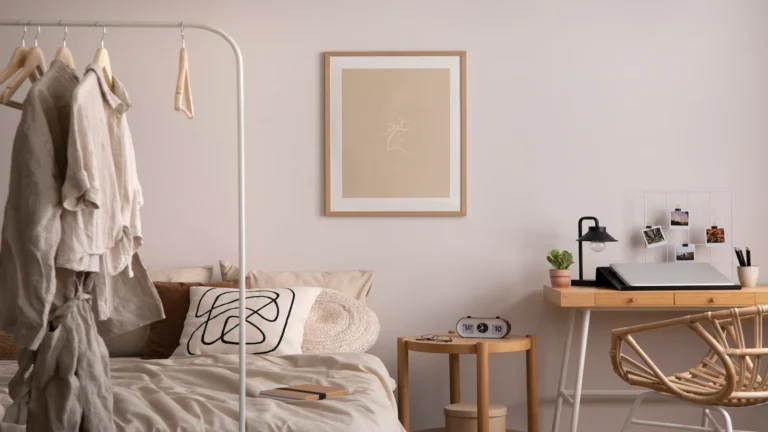Let me tell you something real quick: I used to think decorating my bedroom meant throwing a cute blanket on the bed and calling it a day. But then I stumbled onto this idea called biophilic design—and it completely changed how I sleep, how I feel, and even how I wake up.
Honestly? I didn’t even know what “biophilic” meant at first. But once I learned that it’s all about reconnecting with nature indoors—and that it could actually help me sleep better—I was all in.
Let me walk you through what I discovered, step by step.
First off… What is Biophilic Design, Anyway?
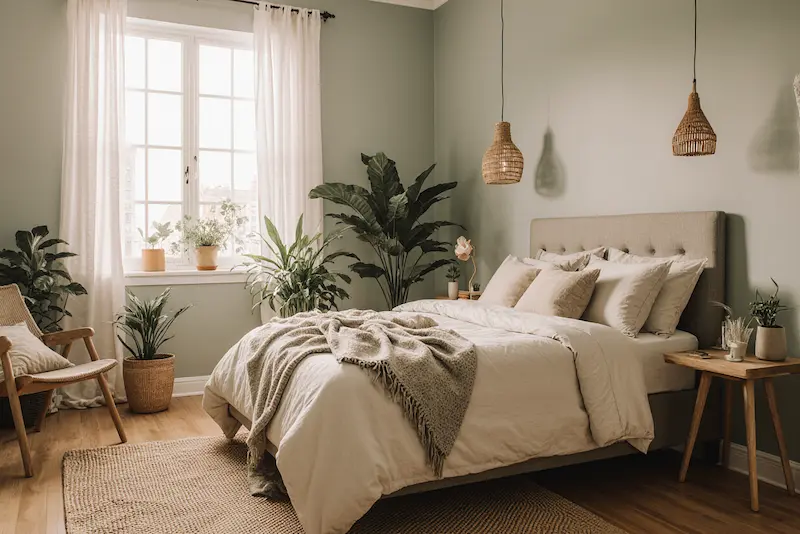
Okay, imagine this: you walk into a space filled with soft sunlight, a few leafy plants, maybe some natural wood touches, and a cozy vibe that instantly makes you exhale. That’s biophilic design in action.
It’s not about turning your room into a jungle (unless you’re into that). It’s about tapping into the calming, grounding power of nature—even if you’re in a tiny city apartment.
In a nutshell: biophilic design means adding natural elements like plants, light, fresh air, wood, stone, and earthy tones into your space to make it feel more… alive. And your brain loves that.
Why Nature and Sleep Are Secret BFFs
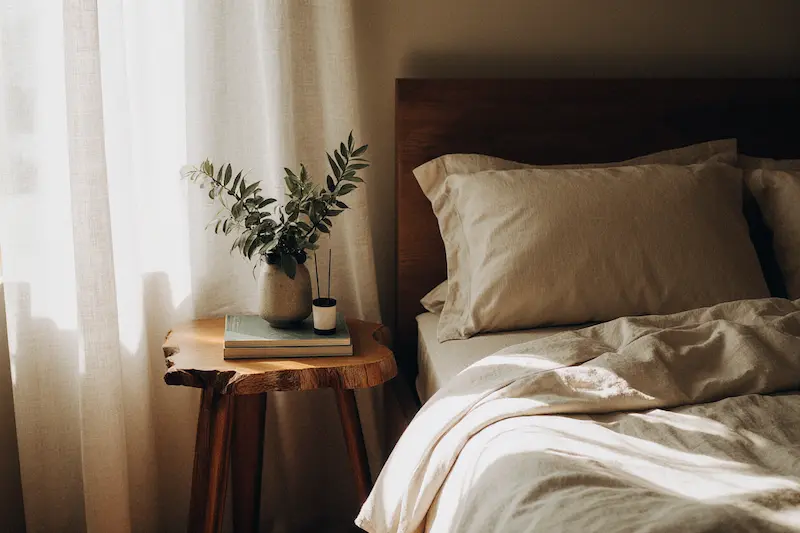
I’ll be honest—sleep and I haven’t always been besties. I’d lie in bed staring at the ceiling, feeling wired but exhausted. Sound familiar?
Turns out, part of the problem was my environment. When you surround yourself with stuffy air, harsh lighting, and synthetic materials, your body stays alert instead of winding down.
But get this: just spending time around nature has been shown to reduce stress, boost mood, and improve sleep. Even something as simple as morning sunlight can reset your internal clock (aka your circadian rhythm) so your body knows when it’s bedtime.
What finally clicked for me? I realized my bedroom was working against me. So I decided to change that.
Start Here: Light, Air, and What You See
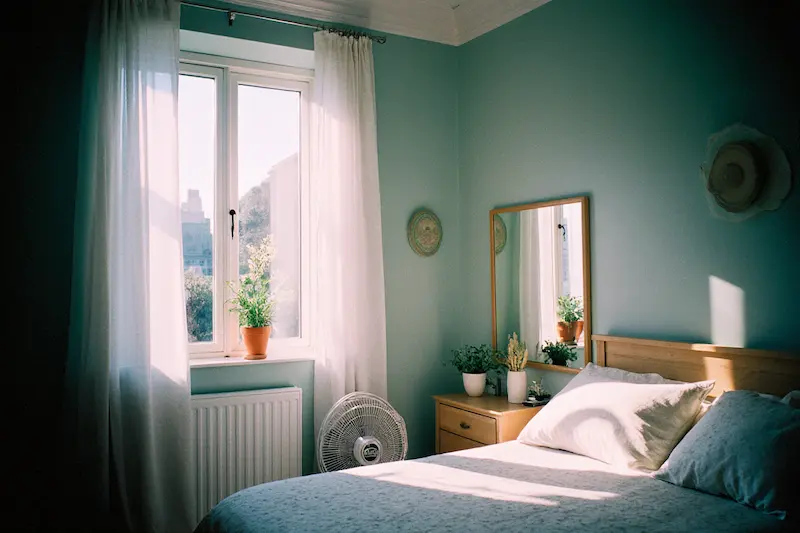
Natural Light = Nature’s Sleep Medicine
If you can do just one thing, make it this: let more natural light in.
I swapped out my heavy curtains for sheer ones, angled a mirror opposite the window, and painted the walls a soft sage green that bounces light around beautifully. It’s wild how much brighter and more peaceful it feels now.
Quick Tips:
- Hang sheer curtains or blinds that filter—not block—light.
- Place a mirror across from your window to double the daylight.
- Use light paint tones with a high reflectance value (look for whites, beiges, or soft blues).
Airflow Matters More Than You Think
This one surprised me. My room looked fresh, but the air felt stale—and I had no idea that was messing with my sleep.
Now, I crack the window (even in winter), run a small HEPA purifier, and keep a fan on low. It’s made a huge difference in how deeply I sleep.
Try This:
- Open your window just an inch at night if air quality allows.
- Keep your vents clear and use a fan to keep air moving.
- Consider an air purifier if allergies or pollution are an issue.
That View from Bed? Make It Work for You
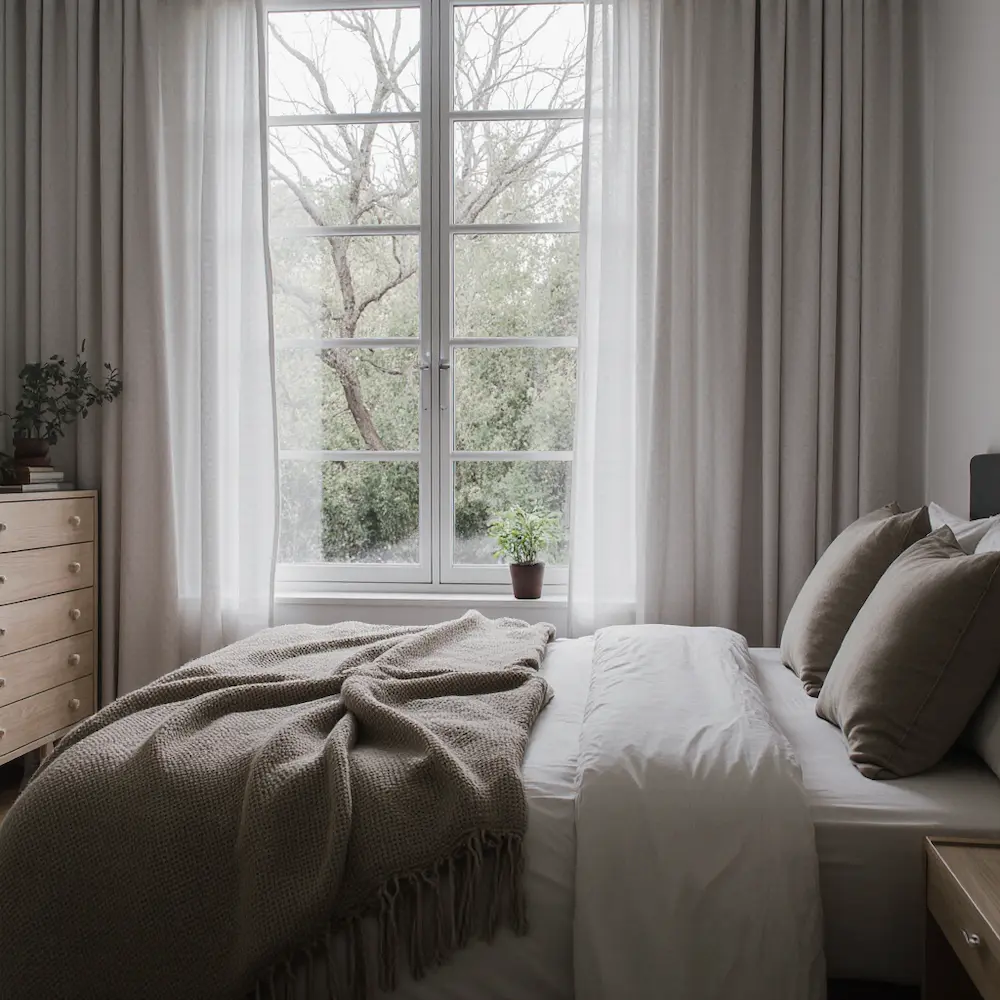
When I rearranged my furniture so I could actually see the trees outside from my bed, it was like a light bulb went off. It made my mornings calmer and my evenings feel more connected to the outside world.
No view? No problem.
- Hang nature photography or botanical prints.
- Add a few window plants or create a mini balcony garden.
- Use light, flowing curtains that frame your windows instead of blocking them.
Let’s Talk Plants (Because They’re Total Sleep Allies)
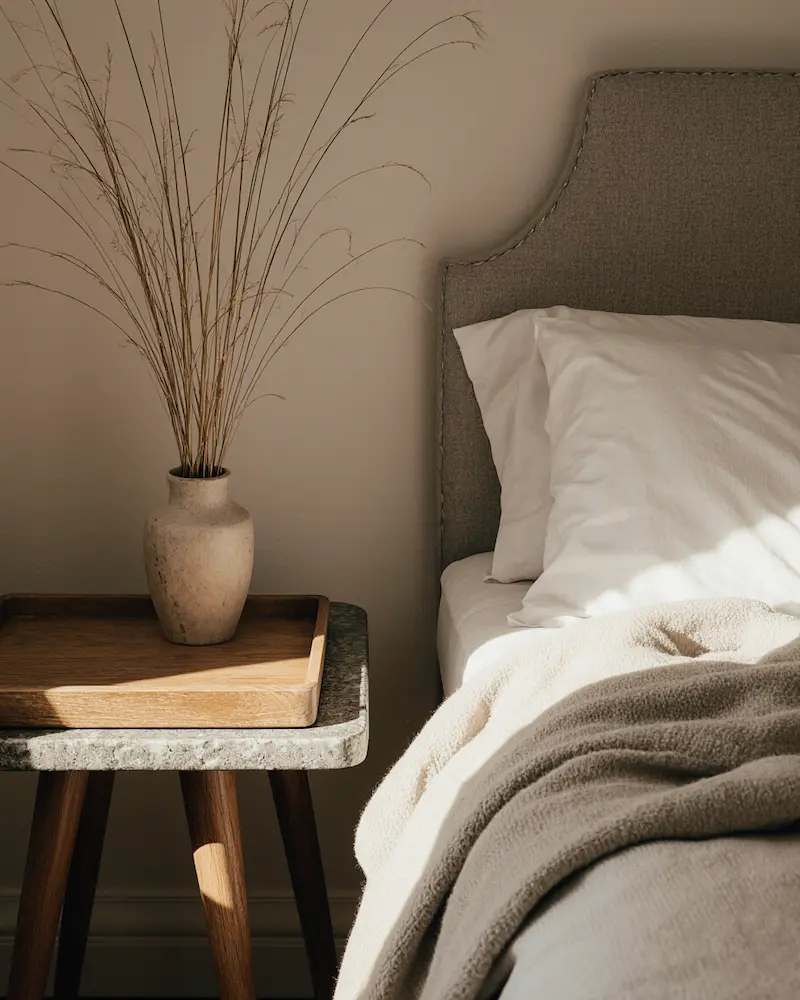
Here’s what I love about bedroom plants: they’re beautiful and they’re little air-purifying machines.
But don’t worry—you don’t need a green thumb. Some of the best ones are basically unkillable.
Top Low-Maintenance Sleep Plants:
- Snake Plant – Produces oxygen at night (not just during the day!).
- Spider Plant – Cleans out indoor pollutants like a champ.
- Peace Lily – Filters toxins and doesn’t mind low light.
- ZZ Plant – Looks amazing, thrives on neglect.
- Aloe Vera – Great air purifier, soothing presence, and bonus skincare!
Plant placement tip: Keep oxygen-boosting plants close to your bed (but not on it—been there, spilled that). Corners, dressers, and windowsills work beautifully. Hanging planters? Total space-savers.
No live plants? No worries. You can still get the benefits with preserved plants or super-realistic fakes—especially if you’re short on light or time.
Let Nature Touch Everything: Materials + Textures
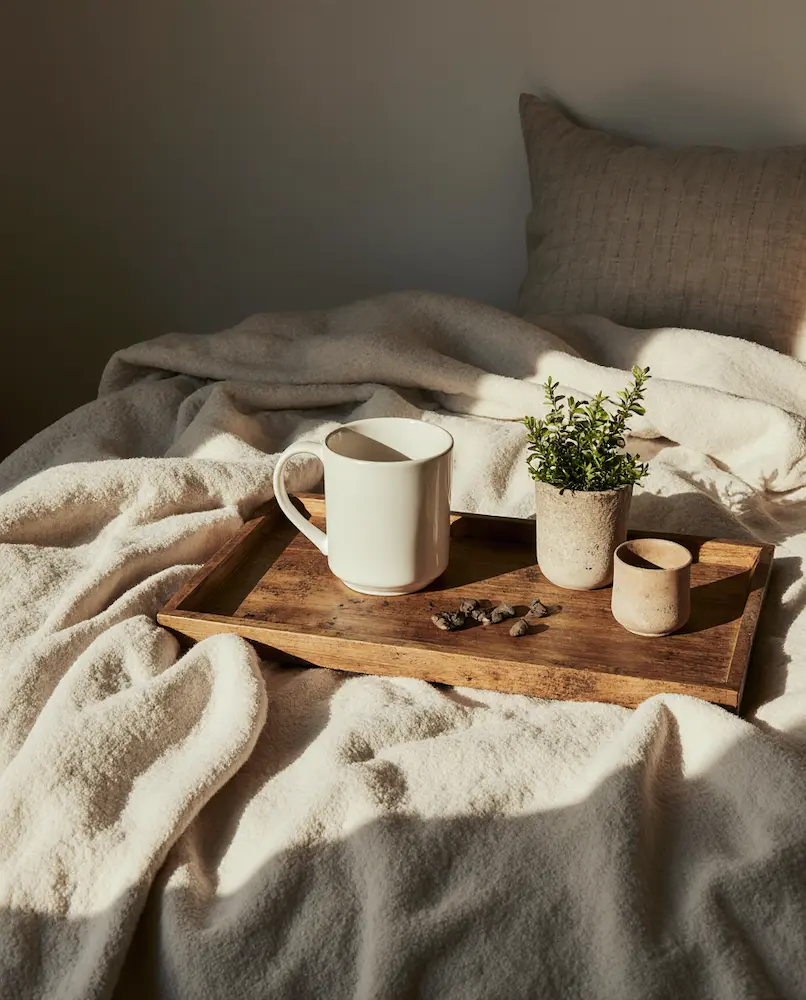
This might sound weird, but… I feel calmer when I touch wood, stone, or linen. There’s something grounding about it.
Why Natural Materials Work So Well:
- Wood calms the nervous system. Even a wooden tray or frame adds warmth.
- Stone and clay regulate temperature and moisture naturally.
- Linen and organic cotton bedding helps your skin breathe, so no more overheating at 2 a.m.
Skip polyester sheets and synthetic rugs if you can—they trap heat and even release VOCs over time.
Pro tip: Clay walls (like limewash or plaster) look stunning and balance humidity. I haven’t tried it yet, but it’s on my list.
Nature Isn’t Just Visual—It’s a Full-Body Experience
Colour Palettes That Calm You Down
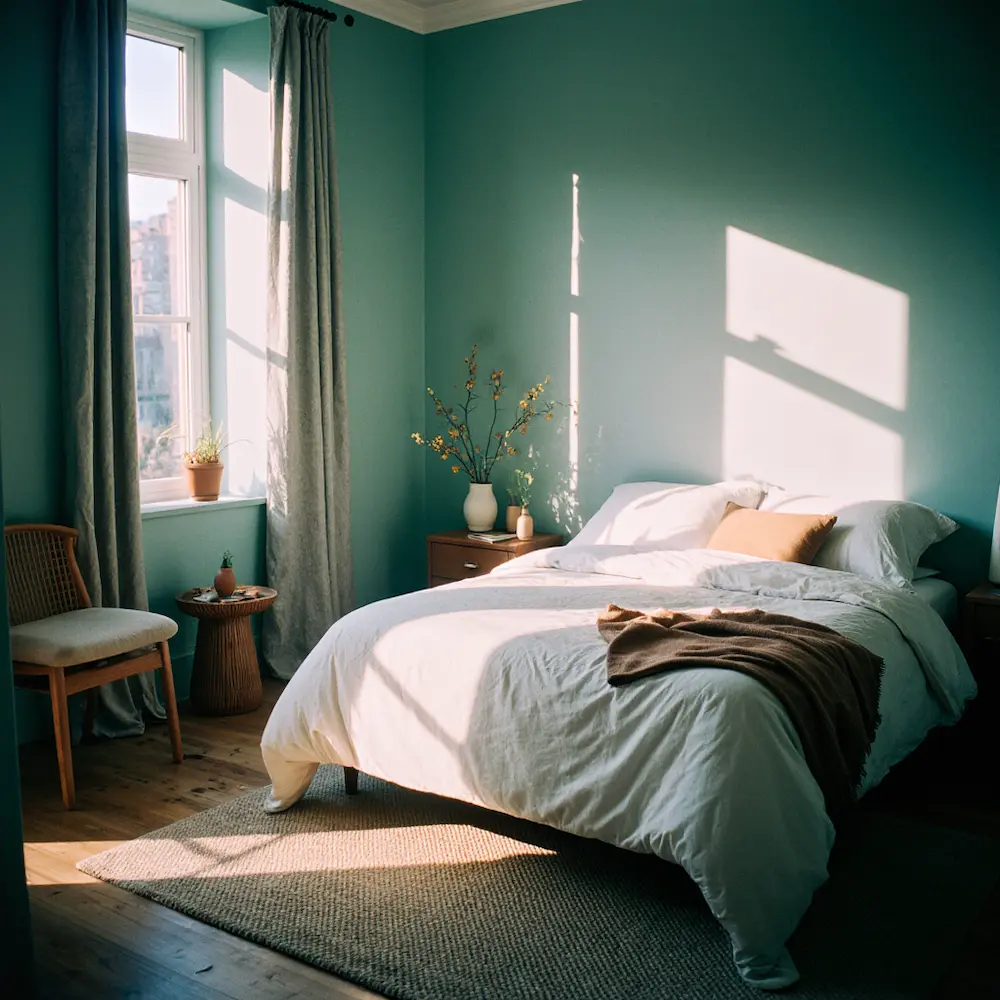
Your walls, bedding, and accents should feel like a walk in the forest or a beach at sunset. Here’s what’s worked wonders for me:
Nature-Inspired Hues:
- Sage, olive, and soft greens = calm + balanced
- Warm browns and terracotta = cozy + grounded
- Creams and soft whites = clean + comforting
Avoid cold, stark whites or neon tones—they can feel jarring when you’re trying to relax.
Add Natural Soundscapes
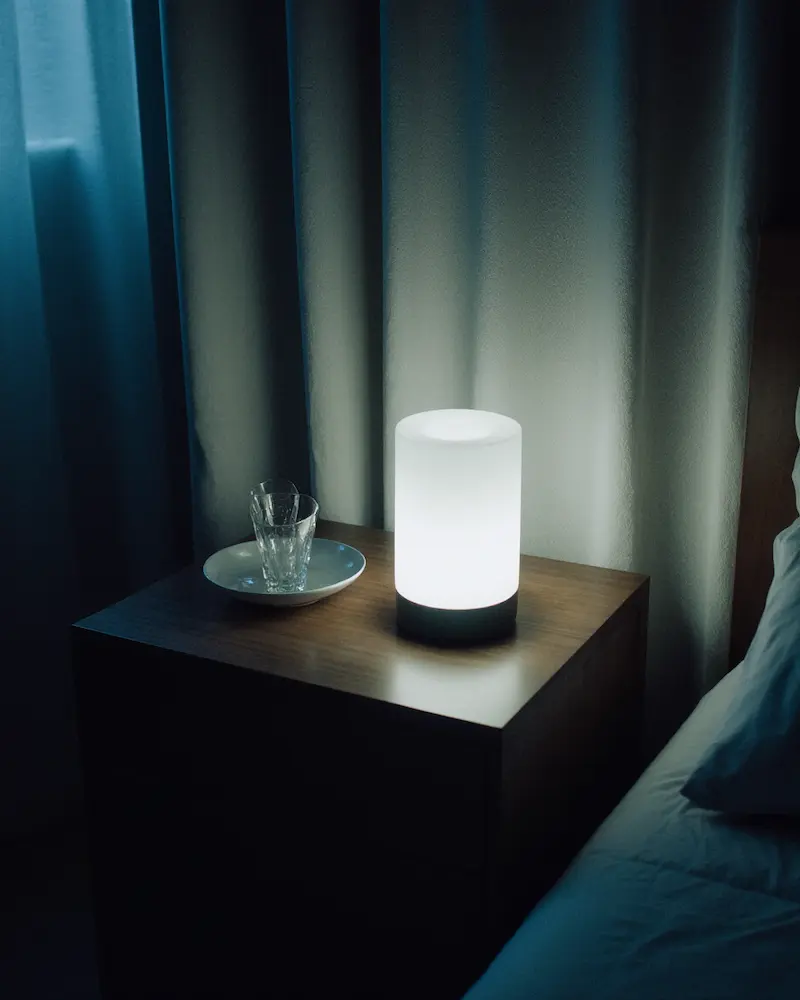
I used to fall asleep to Netflix. Now? It’s a gentle water fountain and the sound of rain on a sound machine. Game-changer.
Best Sleep Sounds:
- Ocean waves
- Rainfall
- Wind through trees
- Gentle stream or fountain
You can find tons of sleep sound playlists or apps—or just buy a sound machine. It’s worth every penny.
Let Scents Do the Work
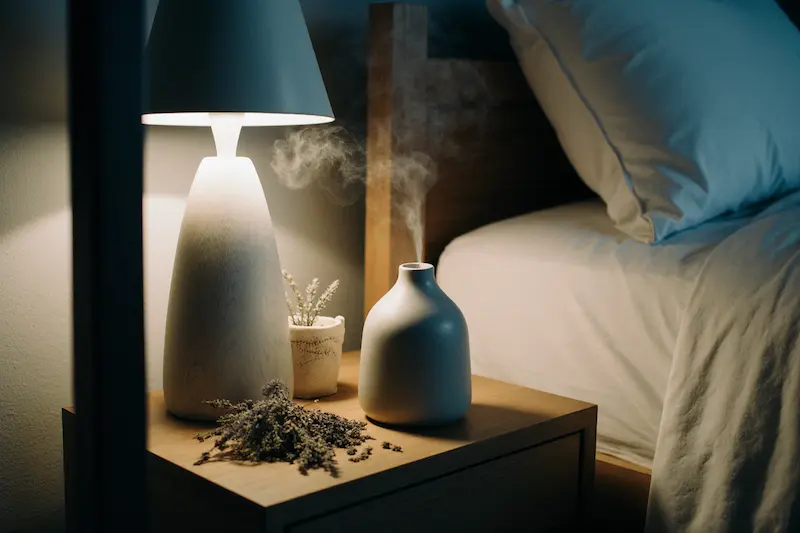
One thing I really didn’t expect? Just a hint of lavender in the air knocked me out like a cozy blanket.
Best Sleep Scents:
- Lavender – relaxes your nervous system
- Frankincense – grounding and peaceful
- Vetiver – deep, earthy calm
- Chamomile or Cedarwood – warm and soothing
Use a diffuser, pillow spray, or even dried bundles tucked in your nightstand.
You Don’t Have to Go All In. Just Start Somewhere.
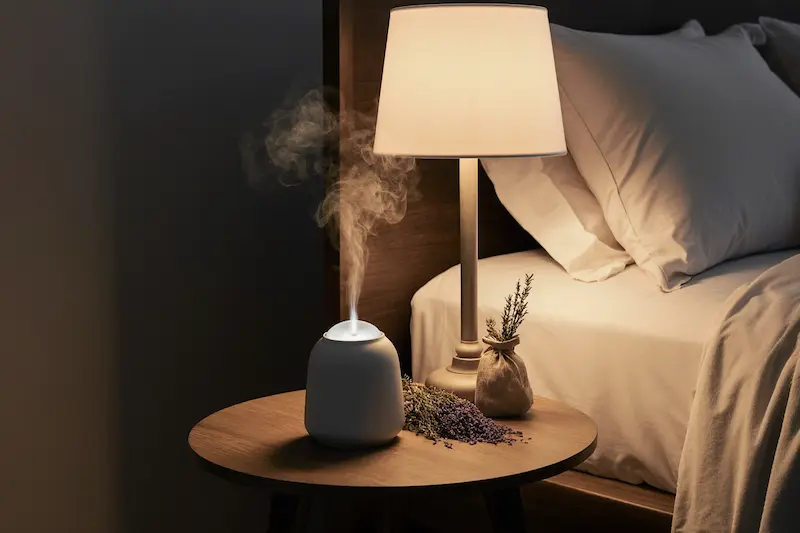
Listen, this doesn’t have to be a major renovation. I started with a plant and some linen pillowcases. Then I moved my bed to catch the morning sun. Little by little, my bedroom started feeling like a peaceful retreat instead of a cluttered afterthought.
And that’s the real magic of biophilic design—it meets you where you are.
Even a single natural element can help your body relax, your mind slow down, and your sleep deepen. That’s powerful stuff.
So Here’s What I’d Say to My Best Friend…

Start with something small today. Open your window. Grab a soft green throw blanket. Light some lavender oil before bed. Add a plant near your nightstand.
Your future well-rested self will thank you.
And if you ever walk into your room, take a deep breath, and feel like nature just gave you a hug? That’s when you know… you got it right.
Sweet dreams, nature lover. You’ve earned them.
FAQs – Real Talk About Biophilic Bedrooms
Q1: What exactly is biophilic bedroom design, and does it really help with sleep?
Totally fair question—I asked the same thing at first. So here’s the scoop: biophilic design is just a fancy way of saying “let’s bring more nature indoors.” When you do that in your bedroom—think plants, natural light, earthy materials, calming colors—it actually helps your body chill out and sleep better. Why? Because we’re literally wired to respond positively to natural stuff. It’s like giving your nervous system a sigh of relief before bed.
Q2: Which plants should I get for my bedroom if I want better sleep (and don’t want to kill them)?
Ah, yes—the low-maintenance dream team! I’ve found that these plants are the perfect combo of easy and effective:
- Snake plant: Gives off oxygen at night. It’s like your sleep buddy.
- Peace lily: Looks elegant, handles low light, and cleans the air.
- Spider plant: Tough, purifies toxins, and doesn’t get dramatic if you forget to water it.
Bonus picks? ZZ plant, aloe vera, and pothos. All great for newbies and totally chill.
Q3: My bedroom doesn’t get much sunlight. How can I still make it feel bright and natural?
Been there! Here’s what’s worked for me:
- Use sheer curtains so you don’t block the daylight you do have.
- Pop a mirror across from the window to bounce light around (seriously, it’s like daylight magic).
- Stick with light-reflective paint colors—soft creams, pale blues, gentle greens. They make the room feel airier, even if it’s a bit dim.
- Make sure furniture isn’t blocking the windows. I once had a dresser covering half of mine without even realizing.
You’d be surprised how much brighter a room can feel with just a few little tweaks.
Q4: What natural materials should I use for furniture and bedding if I want better sleep?
So glad you asked—this is one of the biggest game-changers. Go for:
- Wood furniture: warm, grounding, and honestly just feels better than plastic.
- Stone or clay: great for temperature control and adds earthy texture.
- Linen or organic cotton for bedding: they’re breathable, comfy, and way better for regulating body temp at night.
I ditched my old polyester sheets for cotton and never looked back. No more waking up sweaty and annoyed.
Q5: How can I make my bedroom sound and smell more like nature?
You know that super chill feeling when you hear ocean waves or the smell of lavender hits just right? You can bring that home.
Here’s how:
- Sound: Try a little tabletop water fountain (so soothing), or grab a sound machine that plays things like rain, forest sounds, or ocean waves. Even Spotify has great “nature sleep” playlists.
- Scent: I swear by lavender oil before bed. Other winners? Frankincense for grounding vibes, chamomile to relax, and vetiver if you want something deeper and earthy. Diffusers, pillow sprays, or a little sachet near your bed all work.
Trust me, your brain picks up on these cues and starts winding down naturally.
Bonus Tip: Don’t stress about doing everything at once. Start with one little change—a plant, a scent, a swap to breathable sheets—and see how your space starts to shift. Before you know it, you’ll have built your own peaceful little forest haven.
